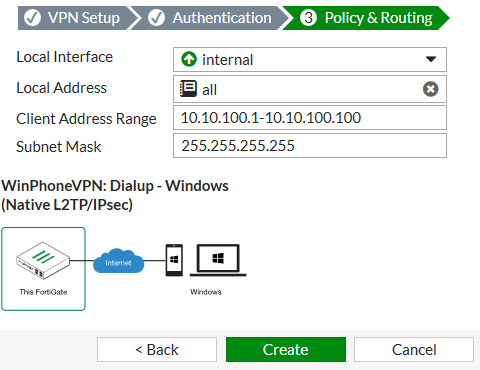
- #IPSEC WINDOWS CLIENT UPDATE#
- #IPSEC WINDOWS CLIENT WINDOWS 10#
- #IPSEC WINDOWS CLIENT ANDROID#
- #IPSEC WINDOWS CLIENT SOFTWARE#
- #IPSEC WINDOWS CLIENT PC#
Application developers may configure IPsec directly using the WFP API, in order to take advantage of a more granular network traffic filtering model than the model exposed through the Microsoft Management Console (MMC) snap-in for Windows Firewall with Advanced Security. WFP is used to configure network filtering rules, which include rules that govern securing network traffic with IPsec. To get the last two pieces of information issue a “more system:running-config” command on your firewall. Windows Filtering Platform (WFP) is the underlying platform for Windows Firewall with Advanced Security. The “Shared Secret” of the remote access tunnel group The “Tunnel Group Name” of the remote access VPN c. The public IP address of the device you are connecting to. You need to know the same three primary pieces of information that you need to configure the Cisco VPN Client, those are,Ī. Firstly I’m assuming you already have the VPN setup, working, and tested, on your Cisco PIX/ ASA device, if not CLICK HERE for instructions, or if your scared of command line try THIS or THIS.Ģ. Windows Server 2012 and Windows 8 are not yet supported for managed servers in the server farm. IPv6 (not yet available at Cornell) includes IPsec automatically no configuration necessary.

It is simpler if you can limit the use to Windows. For more information on AuthIP, see also: AuthIP in Windows Vista. Linux/OS X can do IPSEC, but it requires 3 rd party clients. It is compatible with all common VPN Gateways and designed for single users and small installations. It features an integrated personal firewall, integrated internet connector, and a GUI that looks and functions similarly across all devices.
#IPSEC WINDOWS CLIENT ANDROID#
See WSASetSocketPeerTargetName for more information. The universal NCP Secure Entry Client Suite for Windows, Android and macOS is more than a traditional VPN client. Step forward Shrew Soft, I test a lot of stuff, and its rare that a piece of free ware is as feature rich as the commercial product – but this is 🙂 Solutionġ. (IPsec impersonates the security context under which the socket is created.) Inbound and outbound peer name validation.
#IPSEC WINDOWS CLIENT SOFTWARE#
NCP have had a 圆4 bit compatible client on the market for a while to get round that, but its not free (though considerably less than a bunch of SSL VPN licence’s!) However, as is the way with these things, as soon as people are forced to pay for stuff, someone will produce a free piece of software to do the same. The cost to swap over to SSL/An圜onnect VPN, in terms of licensing and consultancy is VERY high.
#IPSEC WINDOWS CLIENT UPDATE#
Update 18/02/10 – Cisco have released an 圆4 Bit VPN Client for Windows 7 (vpnclient-win圆4-msi-5.-k9-BETA). I was widely accepted for some time that Cisco’s support for the IPSEC VPN client will not be extended to 圆4 bit Windows platforms, That’s simply because they are gearing up towards their own An圜onnect VPN client. Neither SHA256 hashing for auth.Note: This page was originally written before the release of the Cisco 圆4 bit Windows 7 Client CTR or GCM suites are still not supported. Phase 1 proposals are the same but for Phase 2 Windows now proposes SHA1+AES-CBC-256 too (besides SHA1+AES-CBC-128). Update: I've checked out Win10 version 1803. For traffic SHA1+AES128 is not the most secure option to have but it needs not much resource. A newer version might has some improvements (for example the more efficient AES-GCM encryption), but for me the combination of SHA1 and 256bit AES-CBC with Diffie-Hellman Elliptic Curve P-384 offers a reasonably strong and quick security at this time. I know the 1511 is an outdated version of Win10 but that was available on my work laptop. I even tried this registry hack but I didn't manage to force AES256 for phase2: It seems all of these settings are hardcoded in the system as the L2TP/IPsec client ignored any changes I made in "IPSec Settings" in the Advanced Windows Firewall MMC. Select the authentication method for the VPN.

If one gateway is not available, the tunnel connects to the next configured gateway. Cisco Doesn't have an IPSec client for Windows 7 64 bit.It is going to be released later this year.Right now only anyconnect client is the option and that is too ver 2. I’ve tried everything, every possible solution there is to find. Macs work perfectly fine but Windows clients are a hot mess. You can configure multiple remote gateways by clicking the + button. I gave up on L2TP/IPSec with Windows and went for a OpenVPN appliance.
#IPSEC WINDOWS CLIENT WINDOWS 10#
Analyzing the debug level log of the Mikrotik I figured out that Windows 10 (version 1511) is offering the following authentication and encryption settings during the key exchange (in this priority order):įor Phase2 negotiation Windows 10 has the following proposal only: Enter the remote gateway IP address/hostname.
#IPSEC WINDOWS CLIENT PC#
I was experimenting with L2TP/IPsec connections between a Windows 10 PC and a Mikrotik router on the other day. This question is a bit old but I decided to share my experiences with L2TP/IPSec using PSK in Windows 10, somebody might find it useful.


 0 kommentar(er)
0 kommentar(er)
